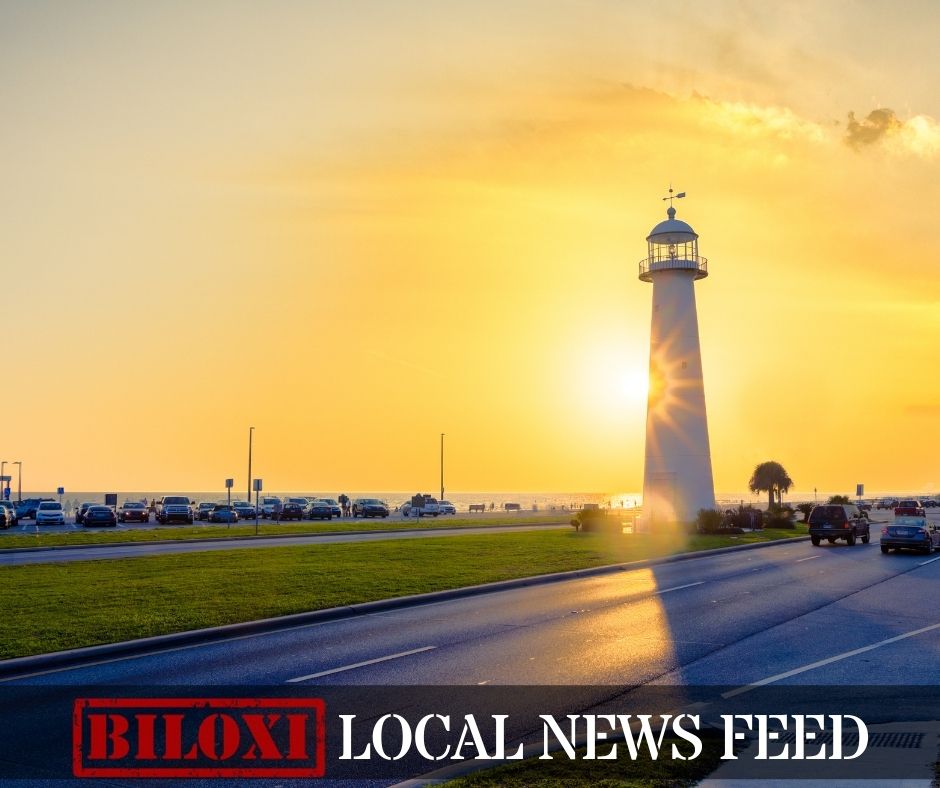News from the South - Virginia News Feed
Environmental groups slam federal plan to ship wetlands mitigation out of Hampton Roads
by Markus Schmidt, Virginia Mercury
June 10, 2025
2025 05 16 Upper Brandon-NOAA ResponseHampton Roads environmental groups are alarmed over a proposed federal decision that they say could undermine decades of local tidal wetlands restoration and protection.
The U.S. Army Corps of Engineers and Virginia’s Department of Environmental Quality are moving toward approval of a new wetland mitigation bank in Prince George County — 50 miles upstream from Hampton Roads — that would allow developers to purchase mitigation credits from outside the region.
Wetland mitigation banks are designed to compensate for environmental damage caused by permitted development projects. Developers buy credits from these banks to offset the impacts, typically by funding the creation or restoration of similar wetlands nearby.
The plan to outsource part of the process has prompted fierce opposition from conservationists, who warn that exporting these credits could lead to the continued loss of local saltwater tidal wetlands without restoring equivalent benefits in the region.
“This allows damages to local wetlands to still occur, but Hampton Roads will lose out on the extensive services and ecological benefits these wetland mitigation sites are designed to offset,” Coastal Virginia Conservancy, a Hampton Roads-based environmental group, said in a statement.
Helen Kuhns, the organization’s executive director, said in a phone interview that the proposed bank represents a dramatic break from long-established practices.
“In the past, the Army Corps has been very specific about the need for that mitigation to be done in the waterway, or at least in the life ecosystem that the damage is being done,” she said. “But the new bank that is proposed is in Prince George County, it’s 50 miles up the river. And the ecosystem there is not the same as it is here in Hampton Roads.”
Kuhns warned that credits purchased there would not deliver ecological benefits to impacted waterways like the Elizabeth River. “We would lose those ecosystem services,” she said.
A spokesman for the Army Corps did not provide a comment Monday.
For over 20 years, banks in Hampton Roads have generated more than 75 acres of restored tidal wetlands, supporting local infrastructure projects while preserving critical ecological services.
The proposed shift to an “out-of-kind” mitigation site — replacing saltwater tidal wetlands with freshwater tidal systems — represents a stark departure from that approach.
“The benefits of our local saltwater tidal wetlands are numerous and include coastal protection, erosion control, water quality improvement, aquatic species habitat and nurseries, carbon sequestration, and environmental contaminant remediation,” Coastal Virginia Conservancy stated.
Mary-Carson Stiff, executive director of Wetlands Watch in Norfolk, called the shift deeply troubling.
“Wetlands Watch is opposed to the expansion of the bank’s reach into the Hampton Roads HUC, because the wetlands losses that we will expect to experience in Hampton Roads cannot be replaced through the creation of wetlands outside of our region,” she said.
Stiff noted that under the Hydrologic Unit Code (HUC) system — a national watershed classification system — trading mitigation credits across these distinct watershed boundaries compromises the integrity of local restoration.
“In coastal Virginia, our wetlands loss rates are staggering with the impacts of sea level rise,” Stiff added. “Wetlands growth rates can’t keep up with sea level rise rates, so our wetlands are drowning in place. And if we don’t do something about it, we’re projected to lose as much as 89% of tidal wetlands by 2080.”
Opponents also argue that freshwater wetlands in Prince George County cannot replicate those benefits. Coastal advocates further point to historical damage in areas like Norfolk — where the loss of wetlands has contributed to severe flooding — as evidence of why keeping restoration local is critical.
“Just considering exporting the flood storage capacity alone, Norfolk’s flood wall has a price tag of $2.7 billion,” Coastal Virginia Conservancy said.
Stiff emphasized the economic stakes as well.
“Wetlands provide countless ecosystem services, they are the most productive ecosystems in the world,” she said. From filtering pollutants and absorbing floodwaters to supporting fisheries and tourism, she noted, “without them, our fishing economy will tank, which provides a really important economic benefit to everyone in Virginia, not just in our region.”
The Corps has issued a notice of intent to approve the bank, despite objections from federal environmental agencies, local wetland experts, and grassroots groups across the region.
In response to the growing criticism, Irina Calos, a spokeswoman for the Virginia Department of Environmental Quality, clarified that the notice of intent came from the U.S. Army Corps of Engineers, not DEQ.
She noted that the Virginia Marine Resources Commission and the Interagency Review Team (IRT) jointly oversee tidal wetland mitigation banks, with the Army Corps serving as the lead federal agency.
“The response from the Army Corps to the National Oceanic and Atmospheric Administration concludes that the bank complies with applicable laws and would provide the functions and services of tidal wetlands that would provide similar structure and function to the impacted tidal wetland,” Calos said. “As such, we would defer to VMRC and the Army Corps on tidal waters.”
Kuhns stressed that the state agency still plays a role in those decisions.
“The DEQ’s role in this is that they are part of the Interagency Review Team, and that is the committee that oversees restoration,” she said. “But I will say that the Army Corps does hold the highest influence there.”
According to Kuhns, the Corps originally helped establish the idea of local mitigation to ensure companies damaging tidal environments restored what they took away.
“We started understanding the important role that wetlands were playing, and why we needed to hold on to those,” she said. “The Army Corps had set up a program that when a company damages wetlands or river bottoms or oyster reefs in a construction capacity, then they have to mitigate for that damage within the watershed ecosystem that they are impacting.”
Stiff argued that the current plan violates that spirit.
“Everybody understands that in-kind replacement is the preferred option. And so breaking that trend is highly irregular,” she said. “The wetlands benefits that we’re deriving in our region are important to our region. And they’re more critically important to the property owners at the site where the damage is occurring.”
Coastal Virginia Conservancy warned that the precedent could set back progress made over the last two decades in restoring and protecting Hampton Roads’ unique coastal ecosystem.
“In the past, the U.S. Army Corps of Engineers has worked tirelessly to restore and make sure that damages were mitigated locally,” the group said in its statement. “The pending decision by the U.S. Army Corps of Engineers leaves Hampton Roads-based environmental groups greatly confused and concerned about the future of restoration in our local waters.”
YOU MAKE OUR WORK POSSIBLE.
Virginia Mercury is part of States Newsroom, a nonprofit news network supported by grants and a coalition of donors as a 501c(3) public charity. Virginia Mercury maintains editorial independence. Contact Editor Samantha Willis for questions: info@virginiamercury.com.
The post Environmental groups slam federal plan to ship wetlands mitigation out of Hampton Roads appeared first on virginiamercury.com
Note: The following A.I. based commentary is not part of the original article, reproduced above, but is offered in the hopes that it will promote greater media literacy and critical thinking, by making any potential bias more visible to the reader –Staff Editor.
Political Bias Rating: Center-Left
This article primarily presents concerns from environmental groups and local advocates who oppose a federal decision they argue could harm regional wetlands and ecosystems. The tone emphasizes ecological preservation, climate change impacts such as sea level rise, and the economic importance of environmental protection, all of which align with typical center-left environmental priorities. While the piece reports statements from government agencies and federal bodies, it does not offer explicit support or critique beyond quoting environmentalist perspectives, but its framing favors conservationist viewpoints over deregulation or development interests, placing it in a center-left context.
News from the South - Virginia News Feed
Some employers take action against employees for social media comments on Charlie Kirk's death
SUMMARY: Following Charlie Kirk’s death, some Virginia employers have taken action against employees who made controversial social media comments. In healthcare and education sectors, individuals were placed on leave or terminated for remarks deemed unprofessional or supportive of violence. Riverside Walter Reed Hospital fired an anesthesiologist, and Newport News and Accomack County schools disciplined staff members. Experts highlight the blurred line between personal expression and professional conduct due to social media’s reach. William and Mary law professor Margaret Hugh emphasized that employment laws and at-will policies allow employers broad authority to act. She urges unity and respect amid heightened tensions.
Some Virginia employers are taking action against employees for social media comments made regarding Charlie Kirk’s death. A legal expert weighed in on where the line is drawn.
Subscribe: https://www.youtube.com/user/wvectv/?sub_confirmation=1
Download the 13News Now app: https://bit.ly/13NewsNowApp
Watch 13News Now+ for free on streaming: https://www.13newsnow.com/13NewsNowPlus
Check out our website: https://www.13newsnow.com/
Like us on Facebook: https://www.facebook.com/13newsnow/
Follow us on X/Twitter: https://x.com/13newsnow
Follow us on Instagram: https://www.instagram.com/13newsnow/
News from the South - Virginia News Feed
Area of interest forms in the Atlantic
SUMMARY: On September 11, 2025, Chief Meteorologist Tim Pandages reported on Hurricane Hub Live about tropical developments in the Atlantic and eastern Pacific. In the Atlantic, a low-chance area of interest near the Cabo Verde Islands may become Tropical Storm Gabrielle but requires favorable conditions. Recent tropical waves have struggled due to stable atmospheric conditions. Models show possible development east of the Leeward Islands with a likely recurving path away from Bermuda. In the eastern Pacific, Tropical Depression 13E has formed, expected to become Hurricane Mario, the season’s 8th hurricane. The Atlantic has had only one hurricane so far, Major Hurricane Aaron. Activity is expected to increase into October.
The newly formed area of interest could become Invest 92-L off the coast of Africa. Find out about that and more during tonight’s episode of Hurricane Hub LIVE! Livestream from Thursday, September 11, 2025.
Subscribe: https://www.youtube.com/user/wvectv/?sub_confirmation=1
Download the 13News Now app: https://bit.ly/13NewsNowApp
Watch 13News Now+ for free on streaming: https://www.13newsnow.com/13NewsNowPlus
Check out our website: https://www.13newsnow.com/
Like us on Facebook: https://www.facebook.com/13newsnow/
Follow us on X/Twitter: https://x.com/13newsnow
Follow us on Instagram: https://www.instagram.com/13newsnow/
News from the South - Virginia News Feed
Cat cafes, chromotherapy and pumpkin delivery: Here’s what’s new in RVA this September
SUMMARY: This September in RVA, Patch to Porch RVA delivers handpicked pumpkins from local farms, offering design, setup, and cleanup services for homes and events in Richmond, Henrico, and Chesterfield. Shore Pump introduces Beam Light Sauna, featuring infrared sauna and chromotherapy, promoting detox, skin renewal, and wellness with customizable sessions and memberships. The Fan now hosts River City’s first cat café, The Perfect Bean, combining a coffee bar with an adoptable cat lounge upstairs. Sourced locally, their drinks include seasonal, cat-themed specials. Cats come from Purring Hearts VA rescue, offering adoption opportunities, fostering community engagement and animal welfare.
What’s New in RVA is dedicated to informing you about the latest happenings in the Richmond area.
-
The Center Square7 days ago
What are data centers and why do they matter? | National
-
Our Mississippi Home7 days ago
Rolling Through History: The Comfort and Culture of Dumplings
-
Local News7 days ago
Steven Spielberg celebrates ‘awesome’ 50th anniversary ‘Jaws’ exhibition at Academy Museum
-
Local News6 days ago
DNA evidence found near scene of Charlie Kirk’s shooting matches suspect, FBI director says
-
Mississippi News Video7 days ago
Summer like temperatures continue
-
News from the South - Florida News Feed6 days ago
Orlando restaurant owner invites artists to parking lot amid federal fight against street art
-
Our Mississippi Home6 days ago
Family of Curious George Creators to Visit de Grummond in Hattiesburg
-
Mississippi News Video5 days ago
The Mustard Seed















































